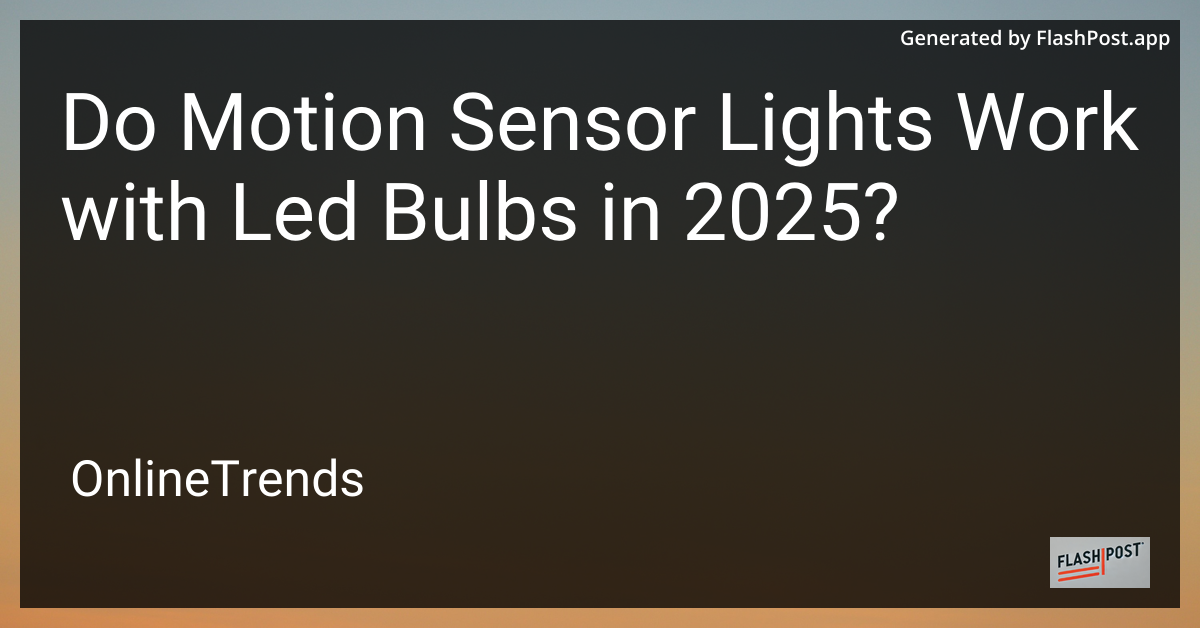
As technology continues to evolve rapidly, homeowners and businesses are constantly seeking energy-efficient and sustainable solutions. One question that frequently arises is whether motion sensor lights work effectively with LED bulbs in 2025. This comprehensive article will explore the compatibility of motion sensors with LED lighting, highlighting the advantages and considerations for pairing them.
The Rise of LED Bulbs
LED bulbs have gained popularity due to their energy efficiency, longevity, and eco-friendliness. Unlike traditional incandescent bulbs, LEDs consume significantly less power while offering brighter illumination. This transition to LED technology aligns perfectly with the growing demand for sustainable living solutions.
Motion Sensor Lights: A Brief Overview
Motion sensor lights operate by detecting movement within a defined range, automatically turning on the lights when motion is sensed and switching them off after a predefined period of inactivity. These lights enhance security, conserve energy, and provide convenience in various settings, from homes to commercial spaces.
Compatibility of Motion Sensors with LED Bulbs
1. Technological Advancements
By 2025, most motion sensor lights are designed to be compatible with LED bulbs. Advances in sensor technology have led to improved compatibility, ensuring seamless operation. LED-friendly motion sensors can detect subtle movements and respond efficiently, making them ideal for modern smart homes.
2. Energy Efficiency
Combining motion sensors with LED bulbs maximizes energy efficiency. When integrated with sensors, LEDs only illuminate when needed, reducing unnecessary energy consumption and lowering electricity bills. This synergy supports sustainable practices and aligns with global energy-saving goals.
3. Dimming Features
Contemporary LED bulbs often come with dimming capabilities, which can be further enhanced with motion sensors. This pairing allows for adjustable lighting levels, creating the perfect ambiance. Motion sensors can be programmed to trigger varying light intensities based on detected movement, adding versatility to lighting systems.
Considerations for Using Motion Sensors with LED Bulbs
1. Power Ratings
When choosing LED bulbs for motion sensor lights, it’s essential to ensure compatibility in terms of voltage and wattage ratings. Non-compatible bulbs may lead to flickering or failure to turn on, disrupting the seamless operation of the sensor system.
2. Sensor Placement
Proper placement of motion sensors is crucial for effective operation. Ensure that sensors are installed in areas where movement is likely to occur to avoid frequent on-and-off cycles, which may reduce the lifespan of both the sensor and the LED bulbs.
3. Avoiding False Triggers
In some cases, environmental factors such as wind or pets can falsely trigger motion sensors. Opt for advanced sensors with adjustable sensitivity levels to avoid such issues and ensure that the lights are activated only by human movement.
Conclusion
In 2025, motion sensor lights continue to complement the progressive use of LED bulbs, providing efficient and reliable lighting solutions for modern living. As we move towards smarter and more sustainable homes, the compatibility of these technologies ensures convenience, security, and energy savings.
For more insights on managing emotions in challenging situations, check out this emotion management in stock trading guide. Additionally, explore strategies for overcoming emotions in trading to maintain composure in volatile markets.
Embrace the future of lighting technology by integrating motion sensor lights with LED bulbs and make your space a beacon of efficiency and innovation.